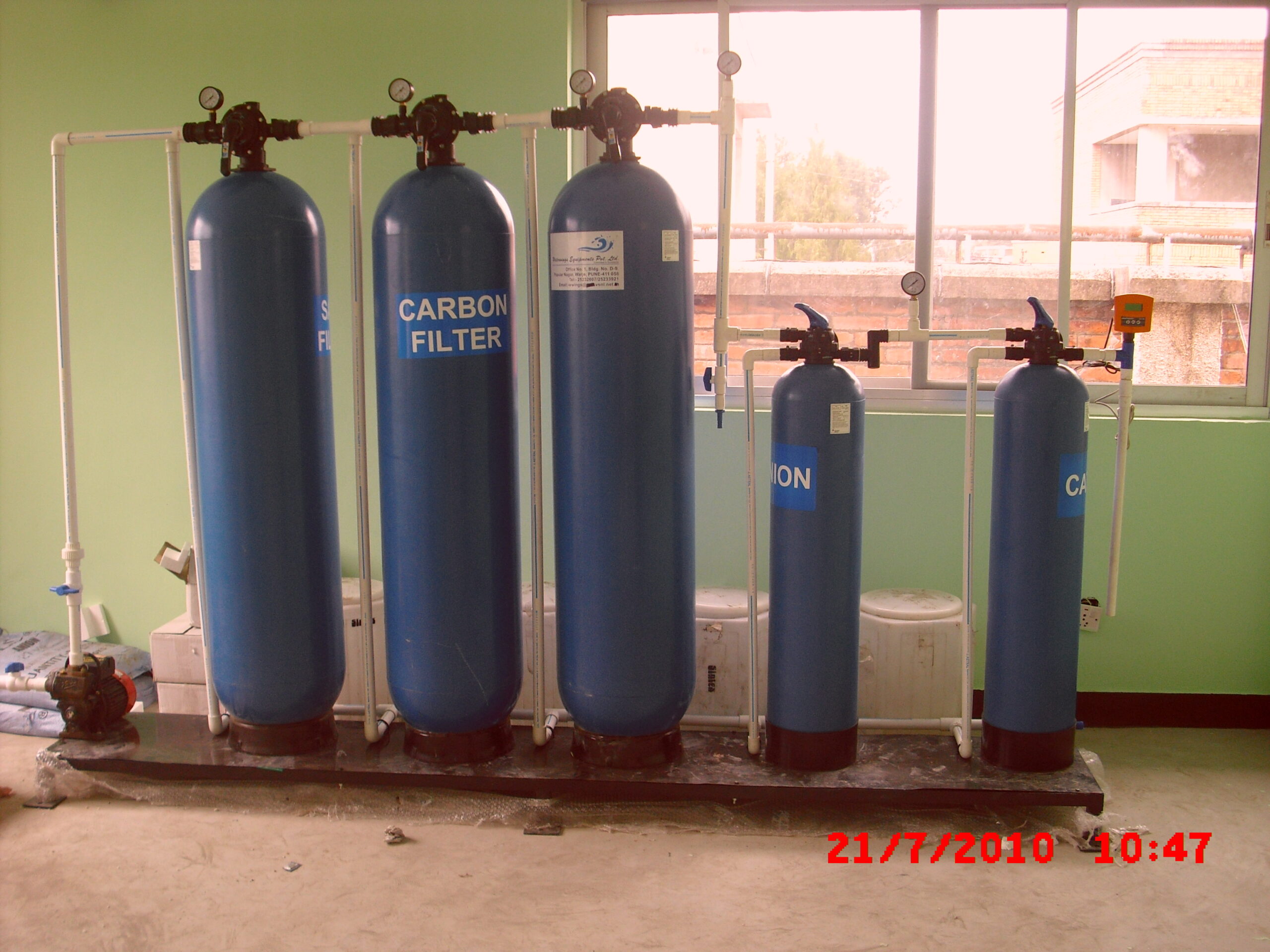Demineralisation Plant (DM Plant)
Demineralisation is the process of removing mineral salts from Water by using the ion exchange process. In this process, water contains both alkaline and neutral salts. A strong acid cation exchanger splits both types of salts-alkaline salts are converted into carbonic acid (H2CO3) and the Neutral salts into corresponding mineral acids.
Carbonic acid is a weak acid and is easily removed in a degasser by simply blowing air through a packed column filled with plastic pall rings.
The mineral acids are neutralised by the strong base anion exchanger producing water practically free from dissolved salts. Silica and residual CO2 are removed by the strong base resin.
The only impurity now present in the demineralised water is a few ppm of hydroxide alkalinity and traces of silica which are removed in the mixed bed. Alternatively the hydroxide alkalinity may be removed in a strong acid cation unit called CATPOL (Cation Polisher). The unit does not remove the residual silica.
Demineralisation can produce high-purity water for nearly every use. Demineralised water is widely used for high pressure boiler feed water and for many process waters. The quality of water produced is comparable to distilled water, usually at a fraction of the cost. Demineralisers come in a wide variety of sizes. Systems range from laboratory columns that produce only a few gallons per hour to systems that produce thousands of gallons per minute.
Applications: Pharmaceuticals, hospitals, and such.

